Service Design with Jen Macias
Speaking with Jen Macias is an experience that will make you want to lean in, listen as closely as possible, and take notes just in case.
As a multidisciplinary designer, former infectious disease educator, and coffee industry professional, Jen has found a way to combine all of this experience to create an impactful and meaningful career. We chatted about how this winding and nuanced path came to fruition, all the twists and turns in between, and where she is focusing her time these days. Focusing on coffee, Jen also shares with us how Service Design thinking can help all of us source, prepare, and consume coffee in more responsible, respectful, and accessible ways.

Hi Jen! Can you tell us where you’re located and how you had your coffee this morning?
I’m in Puerto Vallarta, Mexico and this morning I had café de olla. That’s a Mexican coffee drink that has a lot of history, and while I typically don’t tend to have spiced coffee drinks, when in Mexico that’s what you drink – At least here. If you’re unfamiliar, it’s a blended coffee beverage (when I say blended I don’t mean Frappacino blended). It’s ground coffee, with usually some kind of raw sugar like piloncillo, and cinnamon. Some variations have anise, or orange peel and traditionally it is all made within a big clay pot. In fact, some of that clay pot contributes to the flavor and it's brewed/cooked for a while. It’s not typically something that specialty coffee would glorify, but it is a very important beverage in Mexico and has a lot of amazing history if you really look into it. So, that’s what I had this morning, and it was great, and I had it along with a delicious bowl of menudo rojo, which is red menudo.
Would you mind sharing more about your career path, and how you went from using design to support HIV/AIDS campaigns to starting your own design studio, Duende?
That’s a big question! When I was working and living in Tanzania, I wasn’t a designer yet. My background is in STEM and public health – specifically molecular sciences and biotech. At that time I had an interest in infectious disease and vaccinology, which is what led me to working on science-based educational campaigns for HIV/AIDS. During that time, not only was I in STEM, but I was also studying illustration, and what I had discovered during this time is that when we don’t share the same language, sometimes visualization can help to bridge that gap. This was where I really learned how merging these two things – the complexities within sciences and health, especially communicating public health with visualization, can be really powerful, especially where there’s a language barrier. So that’s what I think really started me on a design path without understanding that that’s what it was, and that it was going to lead me to design.
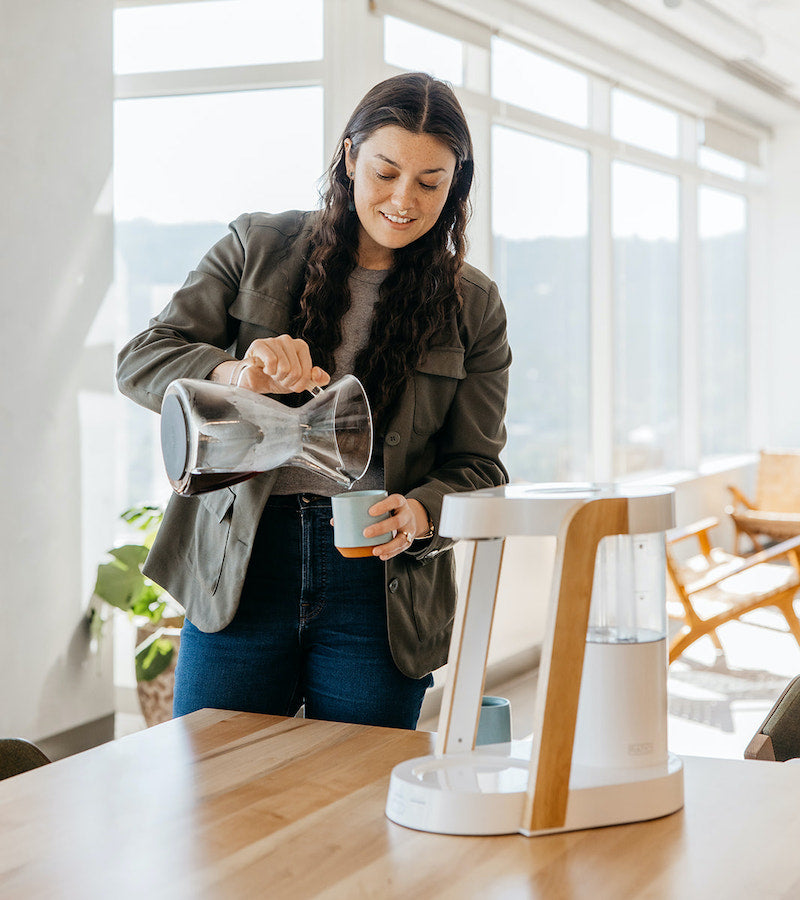
After I moved back to the States, I ended up landing a job at The Biodesign Institute, where I got to learn about interdisciplinary applications of science and what information design and data visualization was. What it made me realize is that there’s all of this incredible research being done by these great minds in science, and yet again, I observed a language barrier. A lot of these amazing researchers struggled with communicating the value of their work with people who were making decisions based on their research. It felt like déjà vu. Similar to my work inTanzania, I saw an opportunity to use visualizations to reduce the language barrier and navigate complexity. And so that’s what really put me on a path to design, and while I didn’t get a degree in design –in fact by the time I realized this I was already wrapping up my fancy interdisciplinary science degree – and I was like ‘you know what, I want to be a designer, but I don’t want to go back to school necessarily’. So I levergaged my coffee industry knowledge to explore design thinking. For context, at the same time I was putting myself through school and working at The Biodesign Institute, I was also at a place called Cartel Coffee Lab. I started with a few counter shifts and did a little time as a roasting apprentice which was really great for me because I got to learn about organic chemistry and other scientific principles in school, and then when working in coffee I could apply those findings to something very tangible, something that others can consume. Then I utilized that knowledge to help me identify how to use content strategy, visualizations, and design thinking to make things like basic water chemistry more digestible for industry and consumers. I started creating guides, and collecting knowledge to share back with my coffee community in Arizona, which is what led me to become a competitive barista, and go on coffee buying trips to origin countries like Brazil. So it allowed me to practice design without having to go back to school for it, which I'm really grateful for, and ultimately if we fast forward a bit, I ended up competing at the US Barista Championship in Portland in 2012, and shortly thereafter I ended up moving to Portland. That’s when I teamed up with Mark Hellweg at Clive Coffee teaching coffee brewing courses. I used my knowledge of coffee education to help create educational materials and in-person classes. Then Mark presented me with an opportunity to expand into content strategy and design. In fact, he and Sprudge had me make my first infographic, which is really just a brewing guide in the form of a decision tree – like brewing basics and how to dial in your coffee.
So, in a nutshell, that’s the origin of how my work in East Africa working on science-based HIV/AIDS awareness and reproductive health campaigns eventually led me to a design career.

My design studio, Duende, came way after my time working at Clive teaching classes and working the bar at Barista. While working those two jobs I started to do freelance design, on the side. Eventually my freelance work stacked up, and got to be more of a demand on my time than teaching classes and working behind the bar, so it eventually led me to being a freelance designer full-time. I worked for another small studio in town, and then I went to work for an ed-tech company. After that, I was like ‘you know, what’s interesting? Corporate workplaces are not designed for people like me!’ I had enough knowledge, skill, and gumption to create my own small studio to change that reality for myself and other creatives. That was a big part of the impetus to form my own studio.
Another seed that planted around the same time was digital accessibility. I stumbled into it while working in ed-tech and have grown my knowledge significantly ever since. So much so, that I now serve as an Accessibility SME across multiple proposals and projects in my consulting work. I digress…Back to my studio origins! At some point, I had to acknowledge that my freelance work was bigger than me as a one-woman show and took the leap to form my own studio. Another aspect that influenced the genesis of Duende was from observing how good design thinking often comes from the acknowledgement of a gut instinct to move things forward, and create inclusive experiences for others. I could not identify a good enough word or phrase to describe that feeling. The fire within us that pulls us…compels us to endeavor forward.There’s no English word for that I could think of, but there is in Duende and that's what originated the studio. 
What is your design process? How do you approach different types of projects, and is there a set of steps you usually follow for all projects?
Typically my design process starts with discovery and doing research. I gather as much context as I possibly can to understand all the different dimensions of a given project. For me, this is the most critical part of the process, and therefore, it is the most consistent part of my process. Depending on the project it varies from there. I’ll carve out a plan based on that information, requirements, constraints, and goals. The question I probably ask the most is ‘What constraints exist that we need to account for so that we can create a plan that is realistic and feasible?’
I don’t typically like to create a plan out of nothing because I don’t like the idea of proposing something that is inaccessible to someone, whether it is time, money, or anything else. So, I like to gather all of those factors first before diving into the question of ‘what does this process really look like together.’
Another part of the process that is rather consistent is I typically ask ‘what is the involvement of the client?’ because my process doesn’t fit all. If you are looking for a designer that won’t bother you or ask questions – who disappears, whips something up, and somehow it magically appeals to everything you thought you wanted out of it – that’s not my process at all. It’s very much a participatory experience. I know my process, but the client has the expertise and I don’t ever want to assume that I know more than the client about their business or industry. I want to work with them to create something that is genuinely unique to what they’re looking to put out into the world while also respectfully challenging different perspectives on ‘how might we make this more inclusive, equitable, or accessible?’ Those are my basic steps that are always true to the process, and then it varies based on project requirements, constraints, and realistic factors that we have to work within. 
What elements do you think most help a brand or business tell their story and portray their identity to an audience?
I think now what is most important to help a business tell their story is a strong understanding of your values and being open to how to celebrate the authenticity within those values. I think right now brands are looked upon with more scrutiny than before, and for good reason.
You know, this question makes me think about what I learned from a book on brand and marketing called Zag and within it there’s mention of ‘brand isn’t so much about what you say it is, it’s about what other people say it is.’ I’ve found this to be true in my professional experience. As designers, there’s only so much that we can do to focus a brand and how it’s expressed, but when you root your business in real values, you set the brand up for success because then you’re actually living in those values and it won’t be performative (which is something we’re seeing a lot right now). If there’s a mismatch between business values and business behavior, then you’ve got a big problem. To summarize, be honest about your values and use them to anchor your brand. In doing so, you have a better chance of building resilience. Think about how you can authentically celebrate within those values and engage your audience in a meaningful way. I think that if there’s a misalignment, people can spot that pretty quick, and you’re just setting everyone up for more labor than is necessary. 
Who makes up the Duende team and how do you like to collaborate with one another? Do you and the team at Duende have any shared routines around enjoying coffee together?
While I've achieved great success in building something out of nothing, I am sunsetting Duende. The honest and transparent truth is that being a minority woman-owned business during a pandemic was and continues to be a lot. All of the difficulties you might have read about in articles, are my reality and I’m still navigating that. But, what came out of that experience is clarity on the type of work that I want to do, which is within humanity-centered design thinking: inclusive, trauma-responsive and accessible. As a business owner, I had to do so much extra work just to get clients through the door, and felt so exhausted that it was really difficult to focus on the projects I wanted to be doing, and there’s not a lot of people who can do what I do. Our team was really great. It consisted of myself and primarily one other person with a variety of contractors, depending on the project. Due to our involvement in our creative community, we naturally ended up with diverse teams, which was really great. However, the amount of work required to advocate for equitable pay, and realistic timelines took a lot out of me. It led me to re-evaluate what was important to me in my life. So Duende, as a studio, will lay to rest; however, my duende, the fire in my belly that compels me to continue doing the work I do, still burns strong. Since making that decision, I now consult on a global experience design team within Slalom, specializing in Accessibility, Inclusive, and Trauma-Informed design.

Speaking of coffee, we’d love to hone in on some of your coffee-specific projects. What have some of these been, and how does one use design to convey the visions of a coffee business?
As far as coffee projects go, there’s a bit of variety early in my career of which includes Clive Coffee, Sprudge, Barista Magazine, Ratio, Barista, World Coffee Research, Coava, and Prince Coffee.
While all of these projects felt important to me, my collaboration with Prince Coffee was particularly unique. Katie Prinsen (owner of Prince Coffee) and I worked together at Barista, and also served as sensory judges together at SCA coffee events. At that time, she was early in her business ownership of Prince, and I was early in my design career. Prince Coffee was my first ever brand identity, and I feel so grateful that I got to share that experience with Katie. It’s been powerful to see our careers kind of evolve in parallel. As it was my very first brand project – I learned a lot and I am just glad that I could help Katie grow her vision into what it is now, which I think is amazing. I am incredibly proud of her work, and our work together and how she has evolved it over time. We both took a chance on each other, and that can feel really difficult to do in a male-dominated industry. We were both newish business owners taking a chance and seeing where it went.
How does one use design to convey the vision of a coffee business? Well, first I think it’s important to acknowledge that design is a process. When I think about the kind of design processes that could apply to coffee I think of Service Design. This flavor of design helps us to explore questions like ‘how do we blueprint an experience for our guests to meet them where they're at in their knowledge while providing opportunities to explore new flavors, thinking, beverage varieties, roasters, producers? How do we root them in a place of curiosity that contributes to their daily life?’

Early in my coffee career, one of the popular narratives we would hear within specialty coffee was ‘seed to cup.’ It’s still an important narrative that is ripe for Service Design thinking. It could be a way to explore a multitude of questions, especially around environmental responsibility and sustainability. Questions like; how can we meet people where they are in their knowledge, price point, or what they're looking for in their experience? How do we make it more accessible for more people to enjoy? How do we surface these incredible stories of all the hands that are involved in the coffee process from seed to cup? How do we protect those stories? How do we honor those stories?
I think we’re all starting to feel the weight of that responsibility, because the fact of the matter is that the way that we consume coffee in the US, and especially in Portland, is such a privileged experience. How do we use that privilege to maintain this daily ritual and ceremony that means so much to so many of us? How do we do that while creating space and respecting the people who help to produce this beautiful experience to begin with? I think that is where leaning into a design process, understanding more about service design, can really help anchor a coffee business no matter where you may specialize in the process. It puts us all in a better position to evolve it in a sustainable and thoughtful way. To help maintain its relevance and importance in our lives without diminishing the lives of others; without devaluing the hard work and sacrifice of the producers. If we want to navigate the challenges ahead, service design might just be a process that can help us transform coffee for the better.
LinkedIn: JenMacias
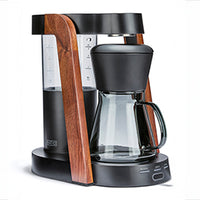 Ratio Eight S2
Ratio Eight S2
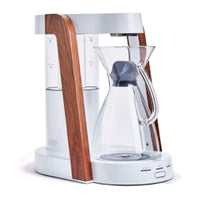 Ratio Eight Original
Ratio Eight Original
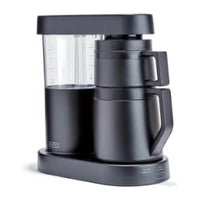 Ratio Six
Ratio Six
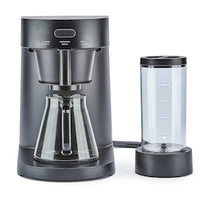 Ratio Four
Ratio Four
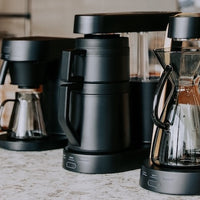 Compare Machines
Compare Machines






